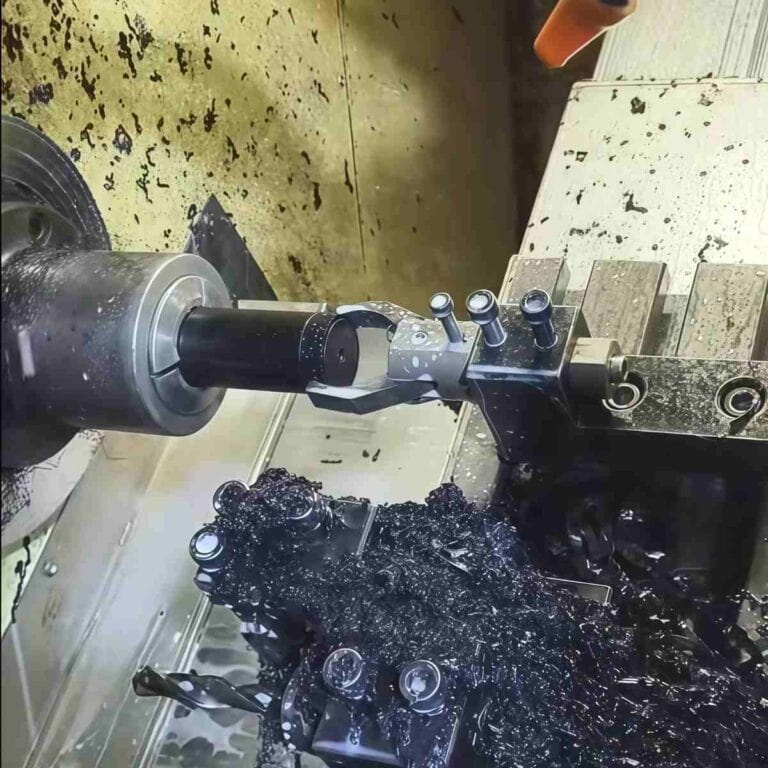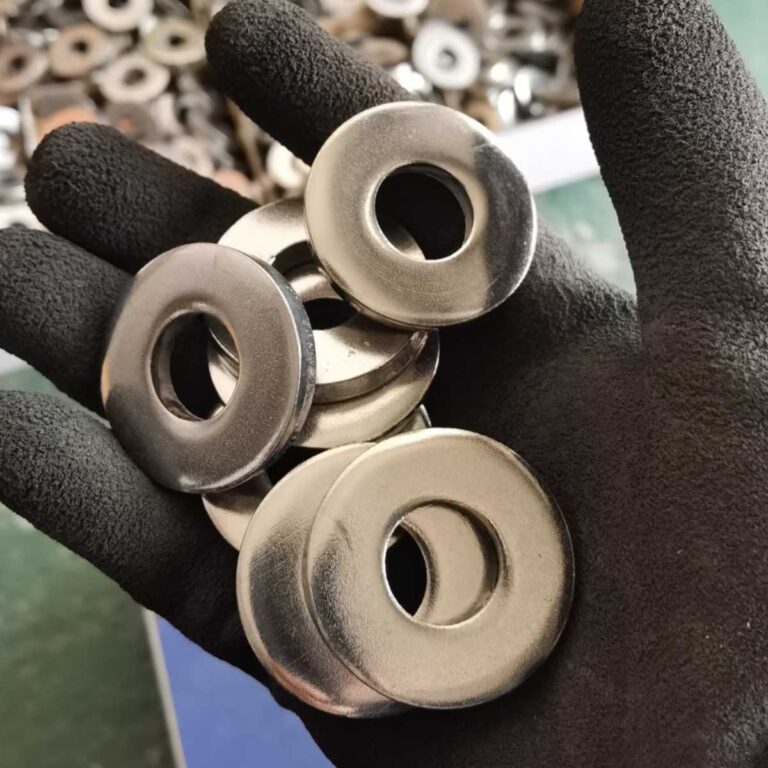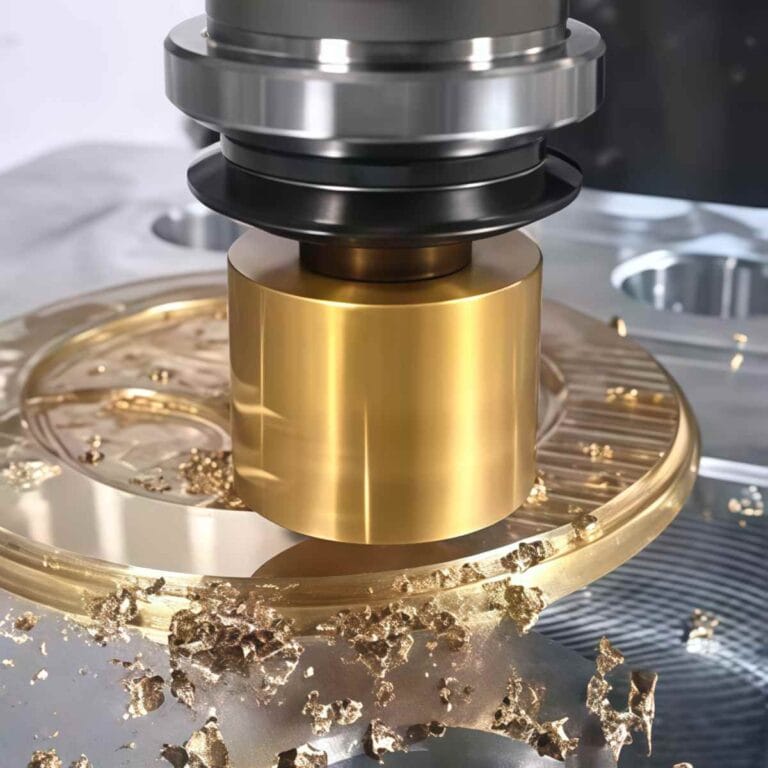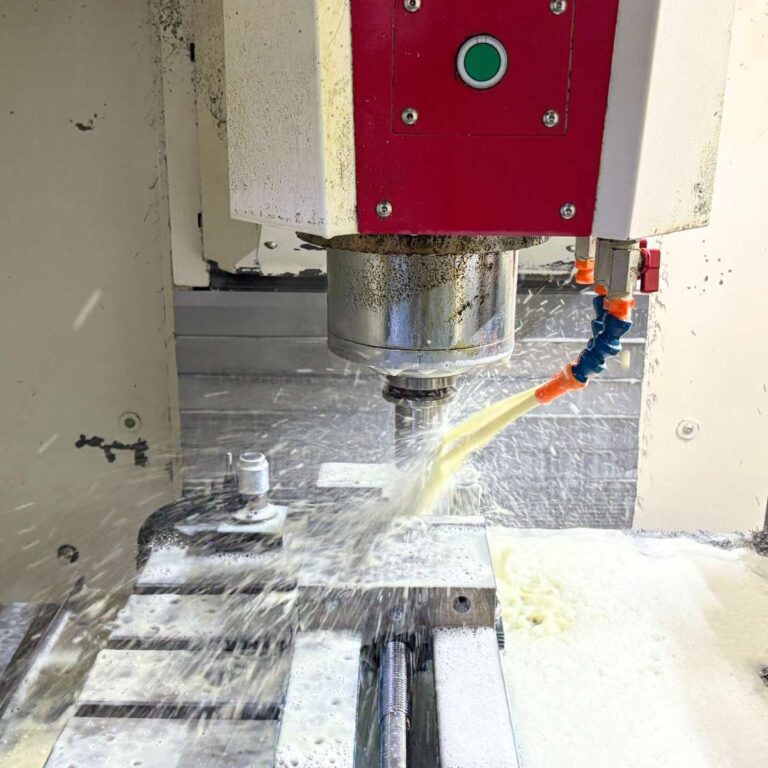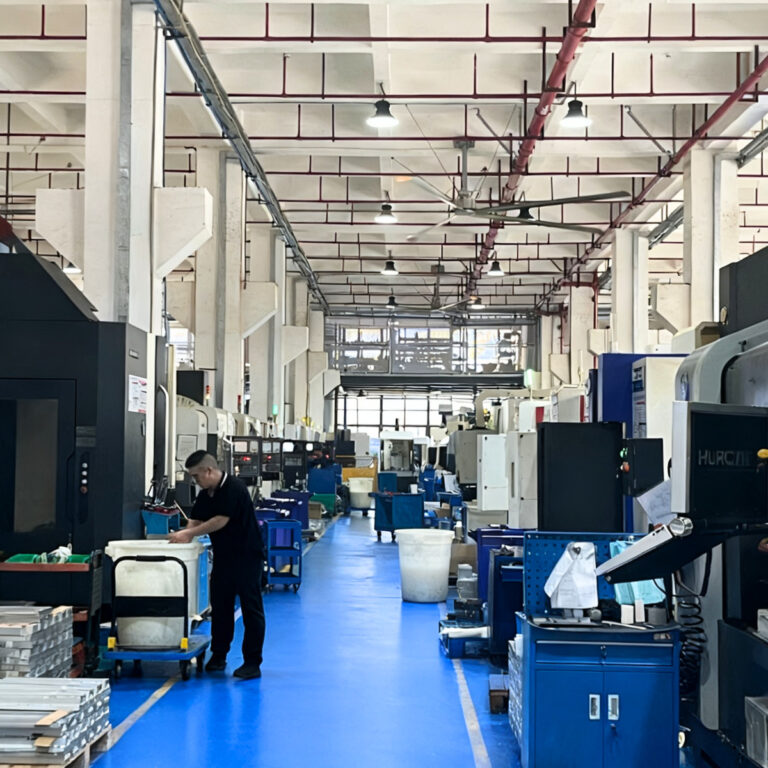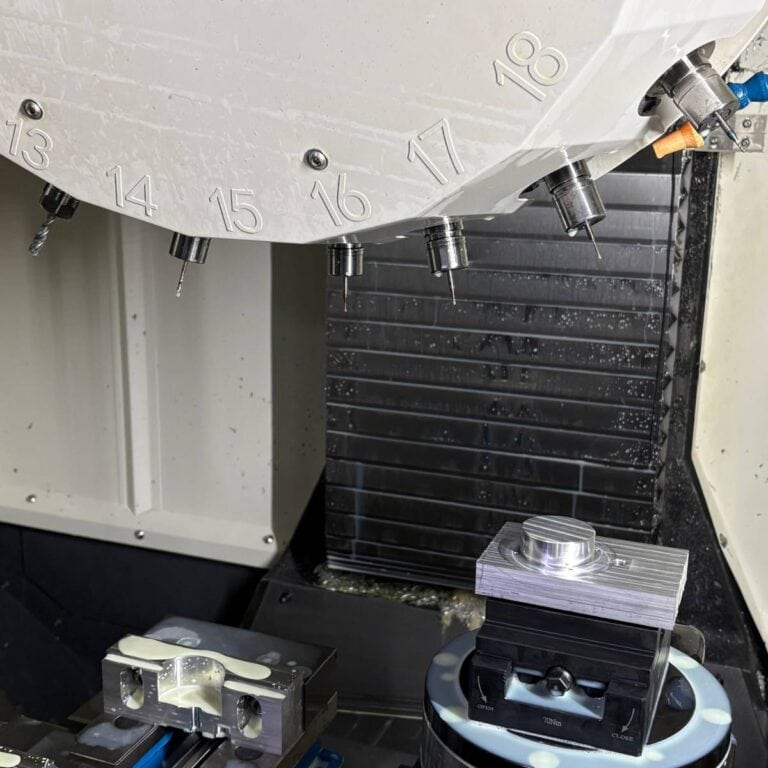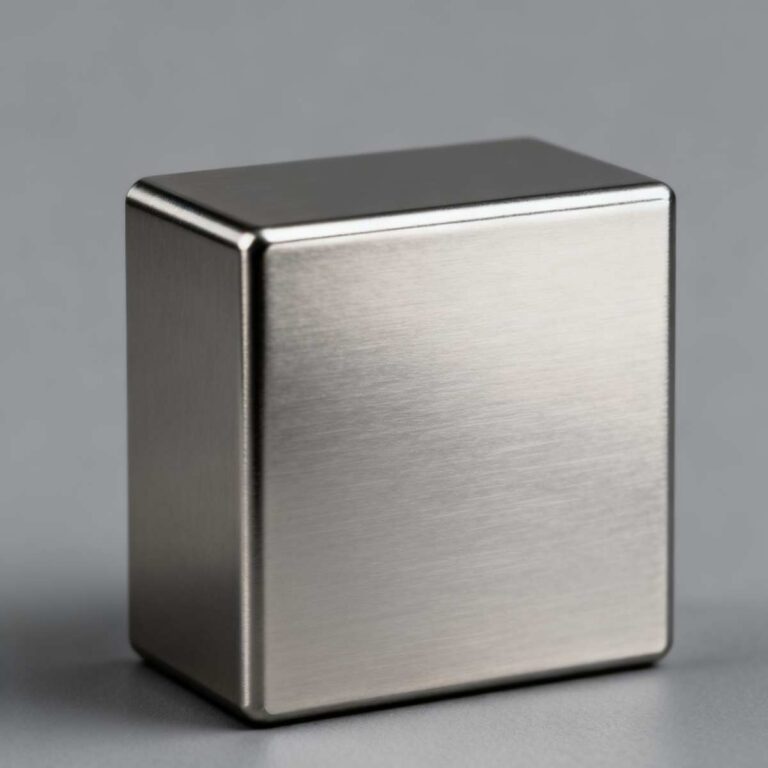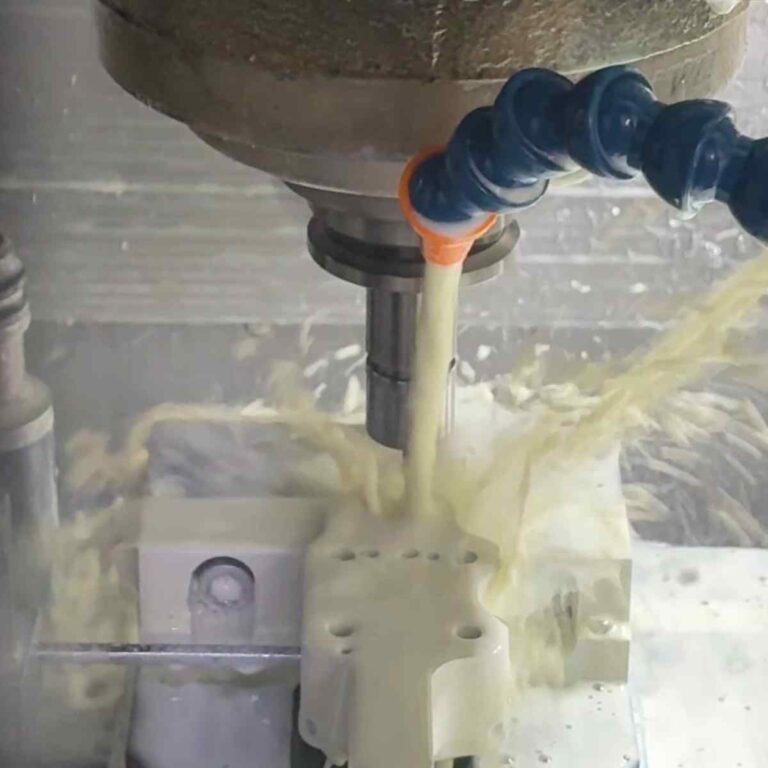Heat deflection temperature (HDT) is a critical indicator when selecting manufacturing materials, especially for products that need to withstand high temperatures or mechanical loads. Simply put, HDT refers to the temperature at which a material begins to deform when subjected to a certain load. For plastic materials, the high or low HDT value directly affects its suitability in different applications. I will take you to an in-depth understanding of the definition of heat deflection temperature, measurement methods, influencing factors, and its important applications in various industries, helping you make more informed decisions when selecting and using materials.
What is Heat Deflection Temperature (HDT)
Heat Deformation Temperature (HDT) is a key indicator for evaluating the high temperature resistance of plastic materials under specific loads. It measures the temperature at which a material deforms when it is heated and subjected to force under high temperature conditions. For CNC machining, the HDT value is directly related to the maximum cutting temperature that the material can withstand during the machining process, as well as the impact of the heat load generated during the machining on the material stability. Generally, the higher the HDT value, the better the stability of the material during the machining process, the ability to withstand higher cutting speeds, and the less likely it is to deform or soften.
In CNC machining, the higher the material’s heat deformation temperature, the more flexible and efficient the process is. For example, when machining high-performance plastics such as PEEK and polyimide (PI), understanding the HDT value of these materials can help us set cutting parameters reasonably, ensure high accuracy and efficiency during machining, and avoid material deformation or damage caused by overheating. By accurately selecting and using materials with higher HDT, it is possible to improve production efficiency in complex machining tasks, reduce machining errors caused by material softening or thermal expansion, and thus optimize the entire production process.
Data shows that choosing the right HDT material in CNC machining can effectively improve machining efficiency and reduce the probability of process errors. Temperature control in each machining project is an important factor in ensuring the quality of the final product, and the HDT value provides us with a basis for selecting the right material. Therefore, understanding the heat deformation temperature and making appropriate material selection before machining are important steps to improve CNC machining accuracy and efficiency.
Why Heat Deflection Temperature is Important
Heat deformation temperature (HDT) is crucial in selecting materials for specific applications, especially in applications that need to withstand high temperatures and pressures. For CNC machining, HDT not only determines the stability of the material in high temperature environments, but also directly affects the cutting parameters, tool selection, and cooling method formulation during the machining process. The higher the HDT value of the material, the more it can maintain its rigidity and stability at higher temperatures, thereby performing better under high loads and avoiding quality problems caused by softening or deformation.
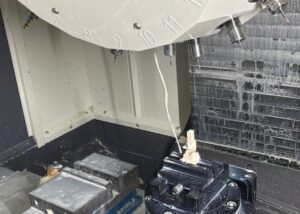
For example, when dealing with high-performance plastics such as PEEK and polyimide (PI), it is crucial to understand their HDT values. The high HDT values of PEEK and PI materials mean that they can withstand higher cutting temperatures, which is especially important for high-precision machining. During CNC machining of such materials, the HDT value helps engineers set the optimal cutting speed and cooling method to avoid problems with material softening or surface damage during machining. Statistics show that the rational selection of materials with higher HDT can improve production efficiency and reduce errors during machining. With these data, engineers can make more accurate machining decisions, thereby improving overall production quality and machining accuracy.
In short, HDT is one of the core indicators in material selection and processing technology design. Especially in application fields with high requirements for high temperature and thermal stability, understanding and applying heat deformation temperature is the key to ensuring smooth, efficient and high-quality delivery of the processing process.
Method for measuring heat distortion temperature
Measuring heat deflection temperature (HDT) is a key step in evaluating the stability of a material under conditions of high temperature and load. HDT is usually measured using two standard methods: ASTM D648 and ISO 75. These standards apply a specified load to the material and gradually heat the sample until the material undergoes a specified amount of deformation. For CNC machining, it is crucial to understand and correctly apply these measurement methods, which helps engineers select the right materials and effectively control heat during machining to ensure that the material can maintain its structure and performance at high temperatures.
In practical applications, the ASTM D648 standard is mainly used to test soft materials, usually applying a load of 0.46 MPa , while ISO 75 is suitable for testing materials with higher loads, usually using a load of 1.8 MPa. The core of these methods is to observe the deformation of the material under load by heating it to a certain temperature. Understanding these standards helps us avoid unnecessary deformation or softening of the material due to overheating or excessive load when selecting CNC processing materials.
By applying these standards and methods, engineers can more accurately control the thermal load during processing, ensure that the selected materials can withstand high temperature processing environments, and maintain consistent quality levels in subsequent production. According to statistical data, the correct selection and testing of the HDT value of the material can not only improve processing efficiency, but also reduce the rework rate caused by thermal deformation, ensuring the smooth progress of high-precision processing.
Comparison of HDT with other thermal properties
Heat deformation temperature (HDT) is usually compared with glass transition temperature (Tg) and Vicat softening point (VST). All three are important indicators for measuring the performance of materials in high temperature environments, but their respective focuses are different. HDT, Tg and VST are key parameters of the thermal properties of plastic materials. Understanding the differences between them can help us better select materials suitable for CNC machining.
**Glass transition temperature (Tg)** refers to the temperature at which a material changes from a hard and brittle state to a softer rubbery state. For amorphous materials, such as vitrified plastics, Tg represents the critical point at which the material changes from rigid to more elastic and flexible. The level of Tg directly affects the hardness and stability of the material at room temperature, especially whether the material can maintain its rigidity under high temperature conditions.
In contrast, **heat deformation temperature (HDT)** refers to the temperature at which a material begins to deform significantly under a certain load. This temperature is usually higher than Tg and is critical for high-load applications. In the CNC machining process, selecting materials with a higher HDT value can effectively avoid material softening and deformation under high temperature conditions, thereby ensuring machining accuracy and stability.
**Vicat Softening Point (VST)** refers to the temperature at which a material softens significantly and begins to take shape under a specific load. VST is often used for thermoplastic materials, especially those that need to withstand high temperature loads. VST is similar to HDT, but it focuses more on the softening temperature, while HDT takes into account the effect of load on material deformation.
In CNC machining, choosing materials with higher HDT values can maintain their rigidity in high temperature environments, reduce thermal deformation, and avoid reduced machining accuracy due to material softening. Therefore, understanding the differences in these thermal properties can help engineers choose the most suitable materials to ensure machining stability and part quality under high temperature conditions.
HDT values of common plastics
Heat Deflection Temperature (HDT) is a measure of the ability of plastic materials to maintain rigidity under high temperature and specific loads, and is widely used to evaluate the stability of materials in high temperature environments. In CNC machining, understanding the HDT values of different materials is crucial to selecting the appropriate processing material. The HDT value of a material determines its thermal stability under high temperature conditions, which directly affects the cutting temperature during the machining process, the selection of machining tools, and the setting of cooling methods.
The following table shows the HDT values of several common plastic materials. With these data, engineers can select the most suitable material for processing according to actual application requirements, thereby improving processing efficiency and product reliability :
| Material Name | HDT @0.46 MPa (°C) | HDT @1.8 MPa (°C) | Melting point (°C) |
| ABS (Acrylonitrile Butadiene Styrene) | 68-100 | 88-100 | – |
| PEEK (Polyetheretherketone) | – | 150-160 | 343 |
| Polyimide (PI) | – | 240-360 | 480 |
| Polycarbonate (PC) | 140-190 | 140-180 | 155 |
| Polypropylene (PP) | 85-140 | 125-140 | 160 |
| Polyester (PET) | 75-115 | 65-80 | 250 |
| Polystyrene (PS) | 75-110 | 70-100 | 240 |
| Polyvinyl chloride (PVC) | 57-80 | 54-75 | 260 |
| Polyethylene terephthalate (PBT) | 115-150 | 50-85 | 225 |
| Liquid Crystal Polymer (LCP) | 220-260 | 190-240 | 340 |
The heat deformation temperature of these materials not only helps with material selection, but also optimizes key links such as cutting parameters, cooling methods and tool selection during CNC machining, thereby improving machining efficiency and the quality of the final product.
Factors Affecting HDT
Heat deflection temperature (HDT) is a measure of a material’s ability to maintain its shape under high temperature and load conditions. It is affected by many factors, and it is important to correctly understand these factors, especially in CNC machining. The type of polymer, molecular structure, use of reinforcements and fillers, type of additives, and processing technology will directly affect the value of HDT.
The following are the main factors that affect HDT:
Polymer type and molecular structure
Different types of polymers behave differently in terms of heat deformation temperature. Generally, polymers with high molecular weight and higher crystallinity have higher HDT. For example, materials such as polycarbonate (PC) and polyimide (PI) have a tighter molecular structure, resulting in higher thermal stability and higher HDT.
Addition of reinforcing agents and fillers
In many engineering plastics, the HDT of the material can be significantly improved by adding reinforcing agents (such as glass fiber, carbon fiber, etc.) or fillers. Reinforcements such as glass fiber and carbon fiber can increase the rigidity and strength of the polymer, thereby improving its thermal stability. For example, glass fiber reinforced polypropylene (PP) and polyimide (PI) can maintain better rigidity and deformation resistance at high temperatures.
fillers
can improve the HDT of materials, excessive additives or inappropriate additives may affect the HDT. For example, some fillers (such as mineral fillers) may improve the thermal stability of materials, but if added too much, it may cause the mechanical properties and HDT of materials to decrease.
technology
of polymers will also affect their HDT. Injection molding, extrusion molding and other processes will affect the molecular arrangement and crystallinity of the material, thereby affecting its heat deformation temperature. For example, under high temperature conditions, if the molecular arrangement of the material is more orderly, its HDT is usually higher.
Humidity and Environmental Factors
Certain polymers, such as nylon, are hygroscopic, which means that in high humidity environments, the material’s HDT may decrease. Changes in humidity can cause changes in the polymer’s structure, affecting its thermal properties. Therefore, before performing HDT testing, the material must be pre-dried to ensure accurate test results.
Selection of CNC machining parameters
For CNC machining, it is very important to understand the HDT characteristics of the material. Materials with high HDT values can maintain rigidity at higher cutting temperatures. Therefore, selecting suitable materials and optimizing cutting parameters (such as lowering cutting temperatures and using appropriate cooling methods) are essential to ensure machining stability. Data shows that optimizing cutting parameters can reduce the problem of material softening caused by excessively high cutting temperatures, thereby improving machining accuracy and reducing production costs.
Factors affecting HDT involve the characteristics of the material itself, the machining process, and the external environment. By scientifically selecting and controlling these factors, the stability of the material at high temperatures can be effectively improved, ensuring the accuracy and production efficiency of parts during CNC machining.
Application of HDT in various industries
Heat deflection temperature (HDT) plays a vital role in many industries, especially in aerospace, automotive and electronics. Many parts in these industries need to remain stable in high temperature environments to avoid deformation or damage. Knowing the HDT value of a material can help engineers choose the right material to ensure that the parts can still maintain good mechanical properties and functions under high temperature operation.
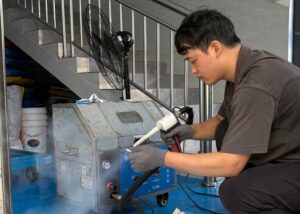
In CNC machining, the selection of HDT is crucial. Understanding the HDT value of a material can help engineers optimize machining parameters, select appropriate cooling methods, and prevent material softening or deformation due to excessively high cutting temperatures during machining, thereby improving machining efficiency and product quality.
The following are the HDT values of different materials and their applications in various industries:
| Material | HDT @0.46 MPa (°C) | HDT @1.8 MPa (°C) | Industry Applications |
| PEEK | 160 | 315 | Aerospace, automotive, medical |
| Polyimide (PI) | 240 | 360 | Aerospace, electronics, precision instruments |
| Polycarbonate (PC) | 130 | 155 | Automobile, electronics, lighting equipment |
| Polytetrafluoroethylene (PTFE) | 70 | 120 | Chemical industry, electronic equipment, medical applications |
| Nylon | 160 | 230 | Automobile, electronics, industrial equipment |
| Polyamide (PA) | 150 | 190 | Medical equipment, automotive parts, electronic products |
As can be seen from the table above, the HDT values of different materials vary greatly under different loads, which directly affects their performance in various high-temperature applications. For CNC machining, understanding the HDT values of these materials helps to select the correct cutting parameters, cooling methods and machining tools during the machining process, thereby improving production efficiency and component quality.
By understanding the HDT value of a material, engineers can select the most suitable material for a specific application, ensuring that the material maintains stable physical properties in high-temperature environments and meets strict quality standards.
How to use HDT data to select materials
When selecting materials for engineering projects, heat deformation temperature (HDT) is a key data to determine the suitability of materials. Based on the HDT value, engineers can determine the performance stability of materials under high temperature and load, especially during CNC machining. Selecting materials with appropriate HDT values can reduce softening and deformation caused by excessive temperature and ensure high-precision machining.
Materials with higher HDT generally exhibit greater thermal stability and can withstand higher processing temperatures. For example, the HDT of PEEK (polyetheretherketone) material can reach 160°C under a load of 1.8 MPa, while that of PA 6 (nylon 6) is 190°C. Such data is particularly critical for parts that require high-temperature operation, especially those in the aerospace and automotive industries.
In addition, HDT data also helps us evaluate the stability of materials. In CNC machining, using materials with higher HDT can keep the processing temperature within a safe range and reduce dimensional errors caused by thermal expansion. For example, the HDT of PEI (polyetherimide) can reach 210°C at 1.8 MPa, while PP (polypropylene) is only 155°C, which means that at the same cutting speed, PEI can withstand higher temperatures and avoid deformation.
In general, the rational use of HDT data can help select materials that adapt to high temperature environments and avoid material deformation or softening, thereby improving processing accuracy and stability, especially in the production process of complex parts.
| Material | HDT @ 0.46 MPa (°C) | HDT @ 1.8 MPa (°C) | application |
| PEEK | 160 | 160 | High performance applications such as aerospace |
| PA 6 | 190 | 240 | High temperature environment parts |
| PEI | 205 | 210 | Electronic components, medical equipment |
| PP | 100 | 120 | General low temperature applications |
| ABS | 100 | 110 | Automobile and home appliance parts |
Through the table, we can see the HDT values of different materials under different loads. These data help us select suitable materials to ensure thermal stability and processing accuracy during CNC machining.
FAQs
What Is Meant By Heat Deflection Temperature?
Heat Deflection Temperature (HDT) is the temperature at which a material begins to deform under a specified load. In my experience, this value is crucial for understanding a material’s ability to maintain its structural integrity in high-temperature environments. HDT is commonly tested at 0.46 MPa or 1.8 MPa loads, providing insights into how a polymer will perform under stress at elevated temperatures.
What Is The Difference Between Heat Deflection Temperature And Tg?
Heat Deflection Temperature (HDT) refers to the temperature at which a material deforms under load, whereas Glass Transition Temperature (Tg) is the temperature at which a material transitions from a rigid, glassy state to a more flexible, rubbery state. In my work, HDT is used to assess a material’s ability to maintain its stiffness under load, while Tg indicates the temperature range where material flexibility increases.
What Is The Heat Deflection Temperature Of PBT?
The Heat Deflection Temperature (HDT) of Polybutylene Terephthalate (PBT) typically ranges from 115°C to 150°C at 0.46 MPa, and 50°C to 85°C at 1.8 MPa, depending on the grade. In my experience, PBT’s relatively high HDT makes it suitable for automotive and electrical applications where materials need to withstand moderate temperatures without losing rigidity.
What Is HDT Therapy?
HDT Therapy, also known as High-Dose Therapy, typically refers to a treatment approach in medical contexts where high doses of medication or therapy are administered. In my experience, this term isn’t widely used in material science, but in the context of HDT for materials, it involves testing or modifying materials’ performance under extreme heat conditions.
What Is HDT High Deflection Temperature?
HDT High Deflection Temperature refers to materials that maintain their stiffness and integrity at higher temperatures under load. In my work, materials with high HDT values are used for applications requiring high-temperature stability, such as aerospace components, ensuring that they do not deform under mechanical stress in extreme conditions.
What Is The Difference Between HDG And HDT?
HDG (Hot-Dip Galvanization) is a process of coating steel with a layer of zinc for corrosion resistance, while HDT (Heat Deflection Temperature) refers to the temperature at which a material begins to deform under stress. In my experience, HDG deals with material protection in harsh environments, whereas HDT evaluates material performance at elevated temperatures.
What Is The Difference Between HDT And SDR?
HDT (Heat Deflection Temperature) measures a material’s ability to resist deformation under heat and load, while SDR (Standard Dimension Ratio) is a ratio used in pipe systems to define wall thickness relative to diameter. In my work, HDT is crucial for assessing thermal stability, while SDR is more about the structural integrity of piping systems under pressure.
Conclusion
Heat deformation temperature (HDT) is an important indicator for evaluating the stability of materials at high temperatures, especially in CNC machining. Understanding the HDT value helps select the right material to ensure stability in high temperature environments, avoid softening or deformation, and thus improve machining accuracy and efficiency. Selecting high HDT value materials helps optimize cutting temperature and cooling methods, improve production efficiency, reduce machining errors, and ensure the quality and reliability of parts.


